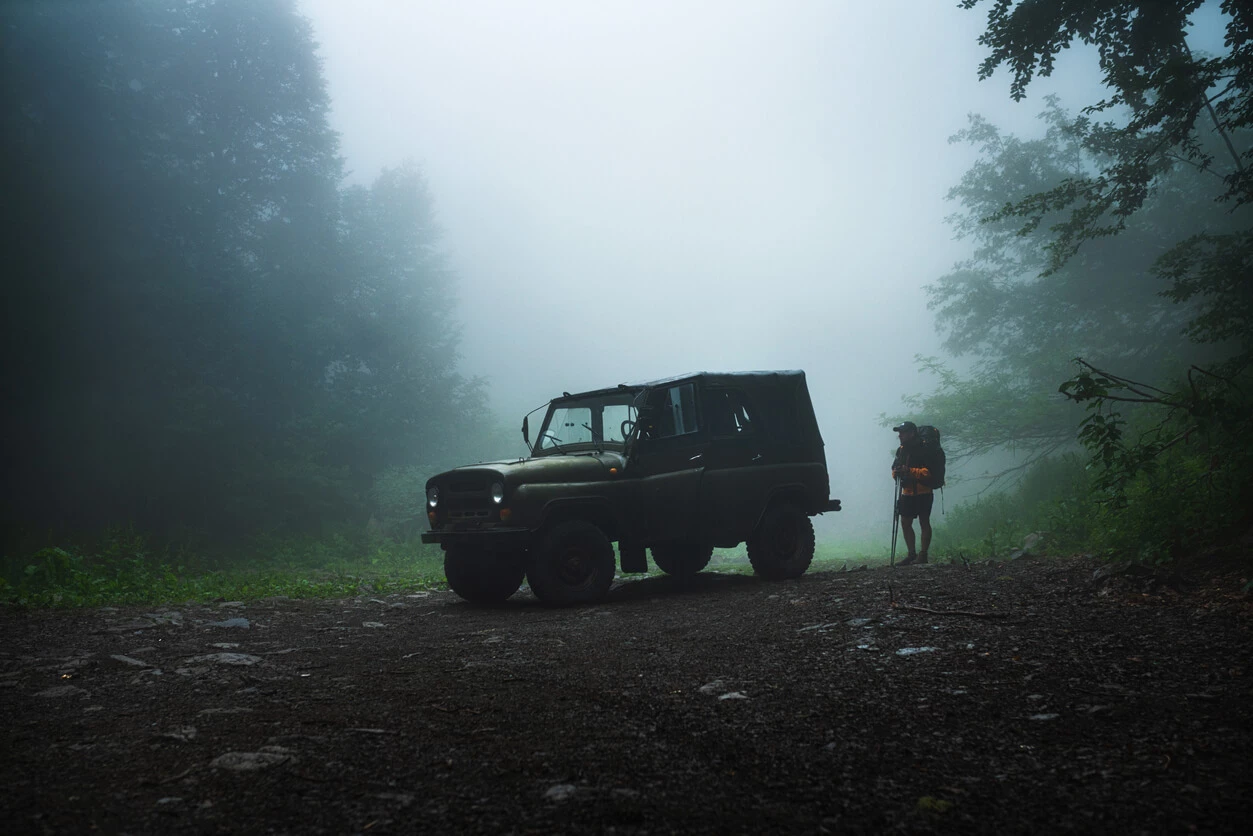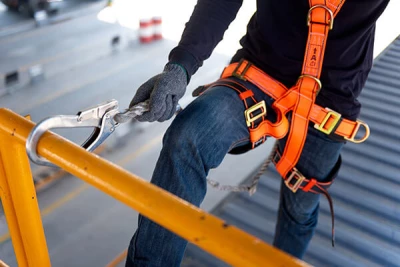Emergency Preparedness
Published 9.5.2023
September is Emergency Preparedness month, and we know emergencies can strike quickly and without warning. Everyone wants to believe that they would know exactly what to do in case of an emergency. Unfortunately, we never know exactly how or when emergencies will present themselves. That is why we are going to talk about the basics this week.
If you've ever been the first one on the scene of an automobile accident or have been working next to someone who had a traumatic injury at work, then you know how crucial it is to know what to do.
Let's review some of the basics that each of us should know for the jobsite and also within our homes:
- Where is the nearest phone to call emergency services?
- Where is the nearest fire extinguisher?
- Where is the closest hospital or urgent care clinic?
- Where is the nearest exit?
- Do you know where you are to meet if we must evacuate?
- Where is the nearest AED?
- Who knows how to use the AED?
- Where is the nearest First Aid or Bloodborne Pathogen kit?
- Who knows how to perform CPR?
- What are the signs of a stroke?
- What are the signs of a heart attack?
- If the power was to suddenly go out right now, what would we do?
- If we were to have an earthquake right now, what would we do?
- In the event of an emergency, what is your communication plan with your family?
- Do you have an emergency supply kit in your car or your home?
These are just a few things that each of us should know while at work or at home. If we have already developed and communicated a plan, when an emergency does arise, we can act more quickly and save folks within life-saving seconds.
Remember This!
Simple fact, the more prepared you are today, the better you will be suited to make critical lifesaving decisions tomorrow. Take the time and talk with your family and your co-workers about what to do in an emergency, because tomorrow will be too late!
The Get Home Bag
Published 9.12.2023
Last week we discussed the basics of being prepared for emergencies, this week we are going to take it a step further and talk about building a Get Home Bag. If you aren't familiar with this concept, the name says it all. It is a 24-48 hour survival kit designed to get you home in the event of a catastrophic event.
You may be asking, is this even necessary? There is an infinite list of events that could warrant the use of a Get Home Bag. Many are regular occurrences, and they are mostly divided into 2 groups.
Natural Disasters: earthquakes, volcanic eruptions, hurricanes, tornadoes, tsunami's, floods, severe weather, wildfires, etc.
Human-made Disasters: crime, arson, civil unrest, terrorism, war, biological and chemical threats, cyber-attacks, etc.
All of these events have happened in the last 10 years and certainly, some disasters are more devastating than others. Statistically speaking, the above events are most likely to occur when you are away from home.
What goes into my GHB?
Your GHB is going to be unique to you based upon your travel expectations, geography, weather, and personal needs.
Here is a list of some of the most essential items you could utilize:
- A small or medium backpack
- Flashlight or headlamp
- Whistle
- Waterproof work gloves
- Water purification pills or filter straws
- Notepad and pencil
- N95 face masks
- Lighters or waterproof matches with tinder
- Change of weather appropriate clothing, including socks, undergarments, and shoes
- First aid kit, including bandages, moleskin, pain relievers, tourniquets, etc.
- Power bank or a small solar panel
- Knife or multi-tool
- Physical map
- Survival blanket or tarp
- Insect repellent
- Durable water bottle
- Signal mirror
- Wind and dust goggles
- Hygiene kit
- Compass
- Rain poncho
- Rope or cordage
- Duct tape
- Pre-packaged and non-perishable food
- Emergency radio
This is of course not an all-encompassing list, and I highly recommend checking out Awaken Outdoors and Tactical for an in-depth packing list and gear review.
Remember this!
A well-prepared Get Home Bag will give you the best chance of survival if SHTF. Think of it like a fire extinguisher - it's not a huge investment and will likely never be used...but it's better to have it and not need it, than to need it and not have it!
Active Shooter - Run, Hide, Fight
Published 9.19.2023
So far this month, we've talked about being mentally and physically prepared for emergencies. This week we are continuing to do the same and we are going to discuss how you and your family can survive an active shooter situation with the Run, Hide, Fight mentality.
As much as it pains us all to think about this happening, we need to be informed and taught what to do if this unfortunate situation arises around us or our families. Sadly, we have learned that they can and will happen anywhere, including schools, restaurants, movie theaters, grocery stores, malls, and even in the places we work. Our actions in the first few seconds can make the difference in our survival and safety.
Run
- Have an escape route and plan in mind, moving quickly and quietly.
- Evacuate regardless of whether others agree to follow.
- Leave your belongings behind.
- Help others escape, if possible.
- Prevent individuals from entering the area where the active shooter may be.
- Call 911 when safe to do so.
Hide
- Find a place where the active shooter is less likely to find you.
- Provide protection if shots are fired in your direction.
- Do not trap or restrict your options for movement or escape.
- Lock and barricade a door to prevent an active shooter from entering your hiding place.
- Silence your cell phone and turn off any source of noise.
- Remain quiet.
Fight
- As a last resort and only when your life is in imminent danger - fight like hell.
- Disrupt and/or incapacitate the active shooter by throwing items, tackling, and striking the shooter's vital areas using improvised weapons. Yell.
- Commit to your actions, be aggressive, and show no mercy. Your life and that of others may depend on it. Show them NO mercy!
Remember this!
Because we are unable to predict when and where an active shooter event will happen, the best and most effective way to survive is to have the Run, Hide, Fight mindset. Please talk with your family and take action today!
After the Event
Published 9.26.2023
This month, we dedicated a lot of time discussing how we should be prepared for disasters and traumatic events. We are now going to discuss how we should begin the mental recovery from such an event.
In the minutes, hours, and days following a catastrophic event, you may be dealing with a wide range of physical and emotional stress. You may be in physical distress due to injuries sustained during that event and you may also be feeling a deep emotional stress brought on by the loss of property, control over your lives, and in some cases, the loss of loved ones.
There is no right or wrong way to feel. However, it's important to find healthy ways to cope when these events happen.
- Give yourself time to adjust. Anticipate that this will be a difficult time in your life. Allow yourself to mourn the losses you have experienced and try to be patient with changes in your emotional state.
- If you have children, talk to them. They may feel scared, angry, sad, worried, and confused. Let them know that it's safe to talk about what's on their mind.
- Limit your news consumption. We live in a world where the news is available to us 24 hours a day via television, radio, and social media. The constant replay of news stories about a disaster or traumatic event can increase stress and anxiety and make some people relive the event over and over.
- Ask for support from people who care about you and empathize with your situation. Social support is a key component to disaster recovery. Family and friends can be an important resource. You can find support and common ground from those who've also survived the disaster. You may also want to reach out to others not involved who may be able to provide greater support and objectivity.
- Engage in healthy behaviors to enhance your ability to cope with excessive stress. Eat well-balanced meals and get plenty of rest. If you experience ongoing difficulties with sleep, you may be able to find some relief through relaxation techniques. Avoid alcohol and drugs because they can be a numbing diversion that could detract/delay active coping from the disaster.
- Establish or reestablish routines. This can include eating meals at regular times, sleeping and waking in a regular cycle, or following an exercise program. Implement positive routines to have something to look forward to during moments of distress.





